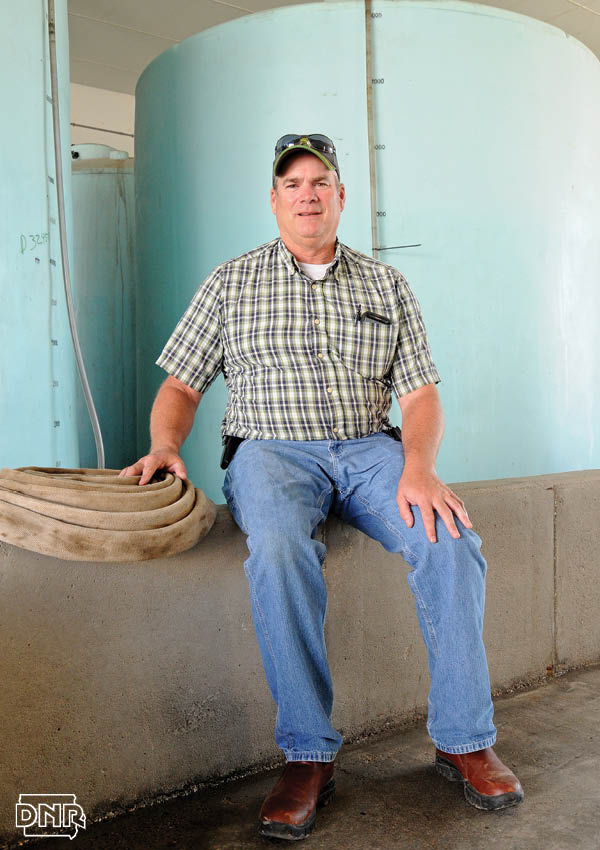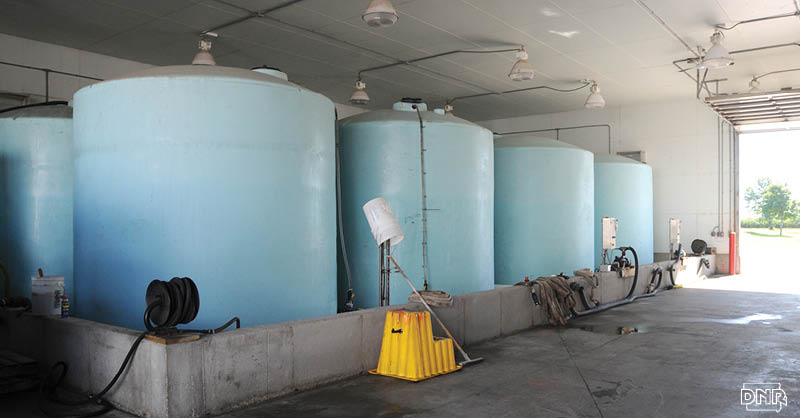 This article originally appeared in Working for Clean Water: 2015 Iowa Watershed Successes
This article originally appeared in Working for Clean Water: 2015 Iowa Watershed Successes
During cold and snowy Iowa winters, salt is a must to keep cars on the road. A new approach protects streams and creates a new product to help drivers make a safe trip.
While salt has long been a go-to for winter roads, the amount of salt put down should be carefully considered to prevent damaging local ecosystems and the undercarriages of vehicles. “Until recently in the U.S., people didn’t see any downsides to road salt because they thought of it solely from a public safety perspective,” says IOWATER and DNR stream monitoring coordinator Mary Skopec. “But freshwater aquatic species can’t survive in overly salty water, so limiting salt runoff is really important to prevent things like fish kills.”
In an effort to reduce the salt reaching Iowa’s waters, Iowa Department of Transportation truck washes across the state now collect the salty wash water from cleaning trucks, and either process or recycle it to make a salty brine to treat roads during Iowa’s often tough winter driving conditions. “Working with DOT to help limit salt in of Iowa’s waterways not only makes them more healthy right now, but also for years to come,” says DNR water quality coordinator Adam Schnieders. “While salt is still applied and a necessity, the environmental impacts are more diffuse as it’s spread across the landscape and not concentrated and washed out of these wash facilities directly to Iowa’s waters.”
The DOT revamped its Ames truck wash for wash water recycling first. The heated floor slants toward two drains that collect wash water. From there, water runs through an interceptor to remove dirt and oil, and then is mixed with more salt and pumped into brine holding tanks. About half of the space in the indoor wash is devoted to eight of these light blue holding tanks, capable of holding 8,000 gallons apiece. Altogether, that’s enough water to fill more than 600 bathtubs, but it goes fast.
“We go through a lot more brine than what our wastewater makes,” says James Van Sickle. “It sure looks like a lot, but you’ve got to think of that spread out over all the roads we take care of.” Van Sickle has been working at the Ames facility for 38 years, and says he’s seen a lot of positive changes in that time.
“Over the last few years we’ve been a lot more conscious about our waste and environmental effects,” says Mary Kay Solberg, senior environmental specialist with the DOT. “I think we did [the facility changes] about as fast as we possibly could.”
When the project started in 2008, the DOT applied about 300,000 tons of salt over the rough winter. Since then, applications have steadily declined due to improved methods like brine and more typical winter weather, resulting in the DOT using less than half of the 2008 amount in 2015.
“We try to help everybody drive as safe as possible, but how you do that has got to change when new information comes out,” Van Sickle says. “Using the wash water isn’t as hard on the environment or people’s vehicles, and in the long run it even saves us money on materials. Building facilities and starting these things is expensive, but I think it makes a difference.”
